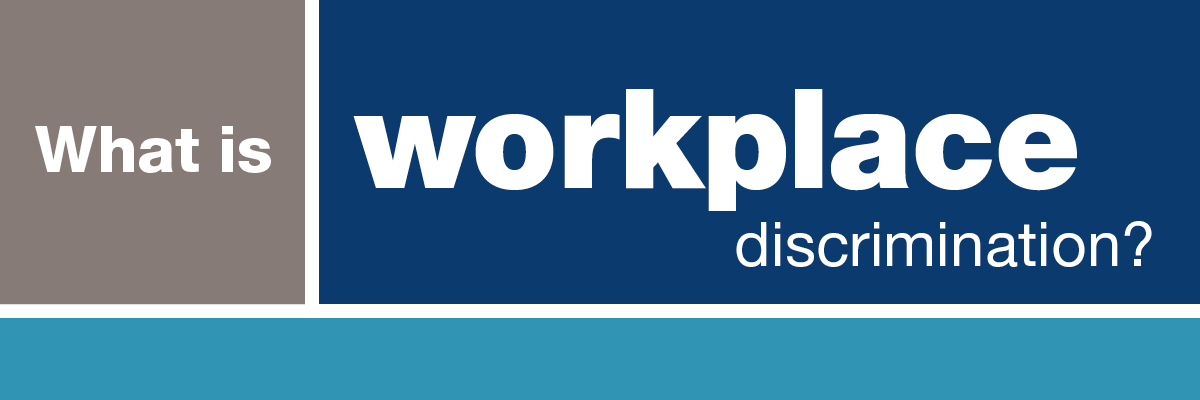Understanding workplace discrimination
Workplace discrimination can be experienced as one-time incidents or as significant, ongoing dynamics, including harassment. Discrimination can happen between employees, or between employee and employer. Discrimination can be done intentionally or unintentionally. Discrimination is harmful regardless of its intended purpose.
State and federal laws recognize that discrimination is unlawful when people are:
- Treated unfairly in employment based on one or more legally protected categories, or
- Subject to illegal harassment at work, or
- Retaliated against for exercising their rights under workplace discrimination laws.
Vermont’s Fair Employment Practices Act (FEPA) makes it an “unlawful employment practice” for an employer to discriminate against a person based on:
- Age
- Ancestry
- Color
- Crime Victim status (not recognized for protection under federal law)
- Disability
- Gender Identity
- Health insurance coverage status (not recognized for protection under federal law)
- HIV+ Status
- National Origin
- Place of Birth
- Race
- Religion
- Sex
- Sexual Orientation
- Association with a member of a legally protected category listed above
These are considered “legally protected categories.”
Who is an “employer” subject to FEPA?
Vermont’s discrimination prohibitions apply to all employers with one or more employees.
In most instances, the Vermont Fair Employment Protection Act mirrors federal protections under Title VII of the Civil Rights Act of 1964, the Americans with Disabilities Act, and other federal laws. However, Vermont law is broader than federal law and applies to all employers with one or more employees working in Vermont. An employer includes individuals, partnerships, labor organizations, government bodies, associations and organizations, and other businesses and agents doing business in the state. Labor unions and employment agencies are also prohibited from discrimination under FEPA.
What kinds of employer practices are unlawful?
Unfair or unfavorable treatment due to membership in any legally protected category is prohibited in any aspect of employment, including:
- Job advertisements, recruitment, and hiring
- Applications, interviews, and background checks
- Training, apprenticeships, referrals and assignments
- Promotion, performance management, discipline, and discharge
- Pay, benefits, and any other terms or condition of employment
- Requests for reasonable accommodations for employees in certain protected classes
Workplace harassment is a form of unlawful employment discrimination. Workplace harassment is unwelcome conduct based on membership in a protected category. Harassment becomes unlawful if enduring offensive conduct in the workplace is a condition of continued employment or if the conduct creates a work environment that a reasonable person would consider intimidating, hostile, or abusive.
Retaliation against individuals who participate in protected activities related to a discrimination or other employment-related complaint is unlawful.
An employer can discriminate through one or a series of decisions, individual conduct, or by systemic problems that result in disparate conditions for members of a protected category.
Intentional and unintentional discrimination
The law recognizes discrimination that is intentional or unintentional.
Intentional discrimination in employment happens when decisions are affected by:
- Actual animosity towards a person or group based on their race, ancestry, or other membership in a protected category (although a showing of animus or malice is not required under the law)
- Stereotypes about a person’s skills, abilities, personality, or other traits which are consciously held about people because of their sex, race, age, or other legally protected category
- Discriminatory preferences or biases of customers, coworkers, clients, or others in the workplace
Unintentional discrimination includes microaggressions, unconscious biases, and unconsciously held stereotypes. It can take the form of neutral policies or practices when they have a disproportionate impact on people in a protected class.
Stereotypes are generalizations or preconceptions about how members of an identity group should or should not act, feel, or present themselves. Stereotypes develop from ideas that oversimplify or generalize a group of people based on their race, class, gender, sexuality, age, ability, religious beliefs, practices, or other characteristics. Stereotypes tend to reflect cultural and individual conscious and unconscious biases, preferences, and prejudices. Stereotypes can range from harmful to seemingly benign, but still have negative effects, particularly in the workplace. Cultural stereotypes can limit how a person is perceived as a worker, team member, supervisor, and professional. They can affect employment opportunities, career advancement, career pursuits, and life choices.
The law prohibits employment actions or work environments that are affected by stereotypes, generalizations, assumptions, or biases about members of protected categories. Workers should not be treated unfairly or less favorably in employment due to their race, skin color, sex, sexual orientation, gender identity, age, disability, religion, national origin, ancestry, place of birth, or any other protected category.


